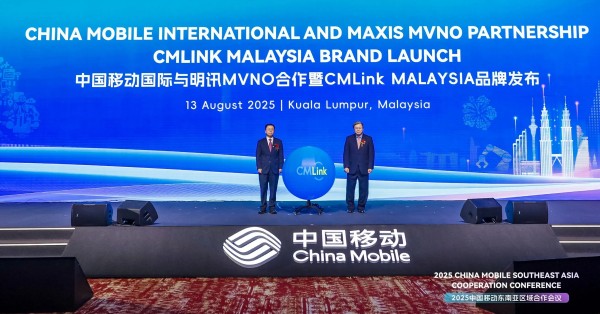LEO satellite broadband split and its global impact
Low Earth orbit broadband is bifurcating into Western- and China-led ecosystems, with strategic consequences for telecom and cloud connectivity worldwide.
Two LEO blocs are hardening: West vs China
Starlink’s scale in the West is meeting a fast-maturing Chinese counterweight centered on state-backed constellations and a growing commercial space sector. On one side sit SpaceX, Eutelsat OneWeb, Amazon Kuiper, and the European IRIS initiative, often linked to NATO-aligned markets and export regimes. On the other hand, Beijing is organizing national LEO projects such as Guowang and Qianfan, complemented by private firms that can move quickly on technology and manufacturing. The result is a split that will influence landing rights, equipment supply, data sovereignty, and service availability across regions.
Why now: launches, lasers, and low-latency demand
Three forces are converging: mass-production launch capability, maturing inter-satellite optical links, and rising demand for resilient, low-latency backhaul. SpaceX normalized high-cadence launches and laser crosslinks. China is answering with a similar tempo and its own optical networking stack. Governments are also reclassifying LEO satellite broadband as critical infrastructure, accelerating public funding and procurement pipelines.
China’s LEO optical crosslinks: scaling capabilities
Recent Chinese demonstrations show a push to close the technology gap in space-based transport networks.
Laser Starcom 400 Gb/s OISL milestone and its significance
Beijing-based Laser Starcom reported a 400 Gb/s optical inter-satellite link between its Guangchuan 01 and 02 spacecraft in LEO, separated by hundreds of kilometers. The satellites launched on Landspaces’ methane-fueled Zhuque-2 rocket, underscoring a broader commercial ecosystem now supporting national constellation goals. While headline throughput depends on protocol overheads, the test demonstrated stable tracking with micro-radian pointing accuracy, which is essential for sustained optical links at orbital velocities. The takeaway: China’s commercial layer can contribute cutting-edge transport capabilities to state constellations.
Optical vs RF: constellation design trade-offs and ground segment needs
Optical inter-satellite links (OISLs) lift throughput and reduce interference risk versus radio frequency, but they demand precision terminals, more power, and tight thermal and attitude control. Starlink’s operational OISLs are typically in the ~100 Gb/s class today. Europe’s ESA is steering HydRON as a laser-based, high-throughput backbone that targets 100 Gb/s and beyond, with a roadmap toward terabit-class links. The engineering choices are blunt: more data rate requires more aperture, power, and pointing performance, plus ground segment upgrades like optical ground stations to de-bottleneck downlinks.
Beyond consumer: EO, science, and deep-space relay use cases
High-rate laser links also reshape Earth observation and science missions, where satellites must dump large data volumes during brief ground-station passes. Space-to-ground optical experiments like TBIRD have validated 200 Gb/s downlinks using compact payloads, hinting at commercial payload synergies. Expect LEO optical relays to support lunar architectures and deep-space missions, while also enabling sovereign data return paths that align with national policy.
Market and policy dynamics shaping LEO access
Technical gains intersect with geopolitics, spectrum policy, and procurement rules that will define market reach.
Western consolidation and Europe’s hedge with IRIS and HydRON
Starlink leads in operational scale, terminal availability, and in-space routing. Eutelsat OneWeb is pivoting to enterprise and government, and Amazon Kuiper is building capacity with a cloud-first posture. The EU’s IRIS and ESAs HydRON aim to secure sovereign capabilities and reduce dependency on non-European providers. For enterprise buyers, this translates into more multi-orbit options and a path to integrate space transport into SD-WAN, private 5G, and cloud edge fabrics.
China’s Guowang/Qianfan: market access and South-South corridors
China’s national constellations are likely to prioritize domestic coverage, Belt and Road corridors, and jurisdictions favoring Chinese infrastructure vendors. Access in the U.S., EU, and allied markets will be constrained by landing rights, security reviews, and export controls. Conversely, Chinese systems may gain an advantage where financing, turnkey deployment, and bundled terrestrial gear are decisive.
Spectrum, ITU priority, and the emerging space firewall
LEO systems will intensify Ka/Ku-band coordination and push for optical ground segments to ease RF congestion. ITU priority and national licensing will shape where and how services operate. Policy trends point to data-routing requirements, lawful intercept mandates, and potential content controls enforced at satellite gatewayseffectively extending national regulatory regimes into space networks.
How operators and enterprises should act now
Telecoms and large enterprises should treat LEO as a strategic transport tier and plan for a multi-orbit, multi-vendor future.
Integrate NTN into 5G/6G roadmaps and architectures
3GPP Releases 17 and 18 introduce NTN for IoT and NR, with further enhancements underway. Map LEO and MEO backhaul into coverage extension, rapid restoration, and mobility use cases. Prioritize architectures that abstract orbit specifics through SD-WAN, segment routing, and network APIs, and align satellite QoS with MEC and security policies.
Procure for resilience, compliance, and sovereignty
Adopt a multi-orbit strategy that blends GEO for broadcast economics, MEO/LEO for low latency, and terrestrial for cost efficiency. Evaluate SLAs beyond bandwidth: measure jitter, path diversity, in-space routing behavior, congestion policies, and optical vs. RF downlink plans. Bake in export-control, data residency, and lawful intercept assessments, which will differ markedly across Western and Chinese ecosystems.
Prioritize terminals and ground-segment readiness
User equipment is the gating factor for the total cost of ownership. Track phased-array terminal prices, power draw, and ruggedization for maritime, aero, and remote industrial sites. Prepare for optical ground stations where applicable, along with gateway placement to meet sovereignty requirements. Integrate satellite telemetry into observability stacks for proactive failover and security monitoring.
Build zero-trust security by design for satellite
Treat the satellite as an untrusted network segment. Enforce end-to-end encryption, zero-trust access, and route validation. Optical links reduce RF interception risk, but jamming, spoofing, and ground-segment compromise remain material threats. Align procurement with vendors cyber certifications and supply-chain transparency.
12-18-month signals to track in LEO broadband
Execution velocity will determine who sets the standard for space-based transport and where enterprises can reliably buy coverage.
Launch cadence and satellite manufacturing throughput to watch
Track how quickly Starlink, Kuiper, IRIS partners, and China’s Guowang/Qianfan add laser-equipped satellites. The winner sets the de facto routing and peering norms.
Enterprise terminal economics and feature sets
Watch price points for enterprise-grade phased arrays, multi-link bonding, and seamless handover across orbits. Direct-to-device milestones under NTN will expand addressable markets.
Optical ground infrastructure and regulatory decisions
Announcements around optical gateways, spectrum coordination outcomes, landing-rights decisions, and national security reviews will signal where each bloc can legally operate and interconnect.
Key takeaways for LEO satellite broadband strategy
LEO broadband is splitting into Western and Chinese spheres, with technology, policy, and procurement paths diverging.
China’s optical progress raises the competitive bar
Demonstrated high-rate laser crosslinks indicate a credible trajectory toward in-space backbones that rival Western systems.
Plan for multi-orbit, multi-vendor LEO strategies
Architect for portability across constellations, enforce zero-trust, and negotiate SLAs that reflect in-space routing realities.
Policy will shape LEO satellite broadband coverage as much as technology
Landing rights, ITU coordination, export controls, and data sovereignty will decide where LEO can be bought and how it is integrated into critical networks.






























